Marrakech: the charm of architecture and the fragrance of history and culture. You have to visit it.
Marrakech is named after Amorakosh, "Ard Allah", also known as the "Red City", "Jewel of the South" or "Capital of Palms", and is the third most populous city in the Kingdom of Morocco. Marrakech is located 580 kilometers south of Charraf Tangier, and 327 kilometers from the capital Rabat. This article highlights Marrakech's appeal as a vibrant center in terms of history, architecture, culinary delights and sights.
Show key points
- Marrakech, also known as the "Red City," is a historically rich and culturally vibrant destination that dates back to the Almoravid Empire in 106
- Strategically located at the foothills of the Atlas Mountains, the city has served as a gateway between the Sahara and the Mediterranean for centuries.
- It enjoys a Mediterranean climate with hot summers and mild winters, making spring and autumn the best seasons for visiting.
- ADVERTISEMENT
- The city is renowned for its iconic architecture, including ancient walls, bustling souks, historic mosques, opulent palaces, and lush gardens.
- Marrakech's culinary scene is a flavorful blend of Berber, Arab, and African influences, featuring traditional dishes like tagine, couscous, and harira.
- With over 400 hotels and numerous hammams, Marrakech offers luxurious accommodations that range from traditional riads to grand resorts.
- A hub of Moroccan heritage, Marrakech hosts several cultural festivals, houses numerous museums, and provides immersive experiences through its old medina and local traditions.
1. Marrakesh's mysterious history:
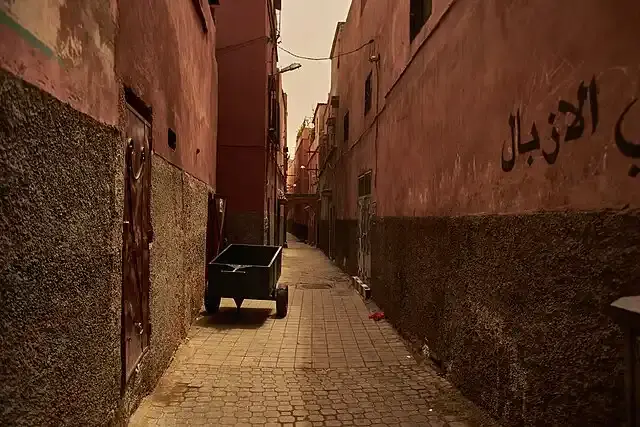
The city of Marrakesh dates back to 1062 during the Almoravid Empire, and was one of the 4 imperial cities in Morocco. In the twelfth century, the Almoravids built in this city many Islamic schools and mosques of Andalusian character. The red walls and various buildings constructed of red sandstone have given the city the nickname "Red City". Marrakech developed rapidly, establishing itself as a cultural, religious and commercial center for the Maghreb and sub-Saharan Africa. In some periods, Marrakesh became the capital of the Kingdom of Morocco.
Recommend
Immerse yourself in the city's fascinating past, from its origins as an ancient Amazigh settlement to its prominent position as a cultural crossroads under dynasties such as the Almoravids and Almohads. Highlight the main historical events and the lasting influence of different civilizations on the identity of Marrakech.
2. Location within Morocco:
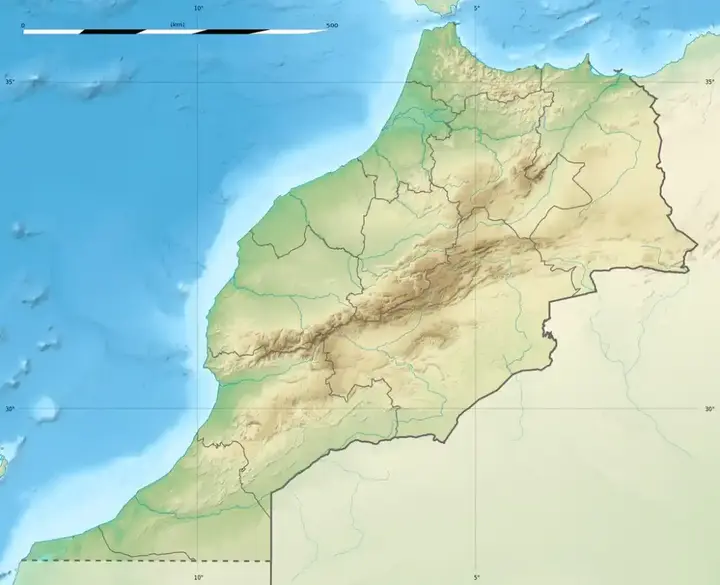
Marrakech is located in the heart of Morocco in North Africa. It occupies a strategic location at the foothills of the Atlas Mountains, which separate the city from the Sahara Desert in the south. Marrakech occupies a central location within the country, making it a vital cultural, economic and tourism hub.
Surrounded by a vast expanse of arid plains and green oases, Marrakech enjoys a privileged location along the ancient trade routes that have connected the Sahara desert to the Mediterranean coast for centuries. Its geographical location has historically facilitated trade and cultural exchange, shaping the city's identity as a melting pot of Berber, Arab and African influences.
3. Climate:
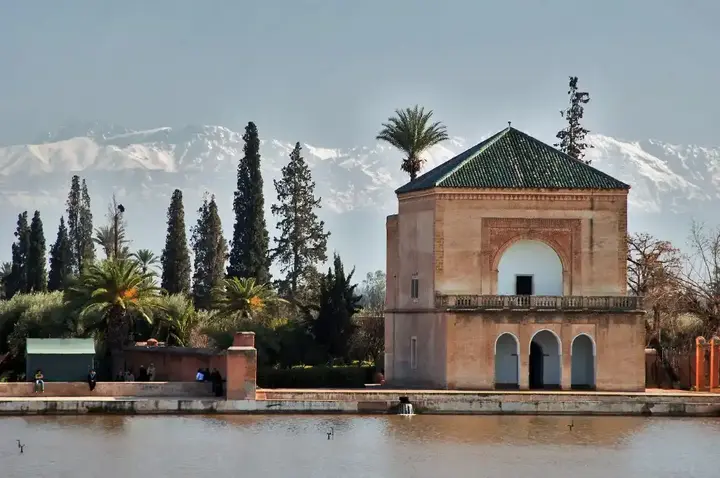
Marrakech has a Mediterranean climate characterized by hot, dry summers and mild winters. The city is sunbathing most of the year, making it an ideal destination for sun-seeking travellers.
During the summer months, from June to August, temperatures rise, often reaching above 30°C, sometimes exceeding 40°C. These scorching temperatures can make exploring the city's outdoor attractions, such as bustling markets and historical monuments, very difficult during the day. However, mild evenings provide relief, and many locals and visitors alike take to the streets to enjoy the cool night air.
In contrast, winters in Marrakech, from December to February, are mild and pleasant, with average daytime temperatures around 18-20°C. While rainfall is rare throughout the year, winter brings showers every now and then, rejuvenating the surrounding landscape and adding a refreshing touch to the city's atmosphere.
Spring between March and May and autumn between September and October are the best times to visit Marrakech, when temperatures are comfortably warm, ranging from 20-25°C, and the city is decorated with flowers and green plants. These transitional seasons provide the perfect conditions to explore Marrakech's myriad attractions, from its historical ruins to its vibrant souks and delicious cuisine.
4. Architectural wonders - icons from the heritage of Marrakech:
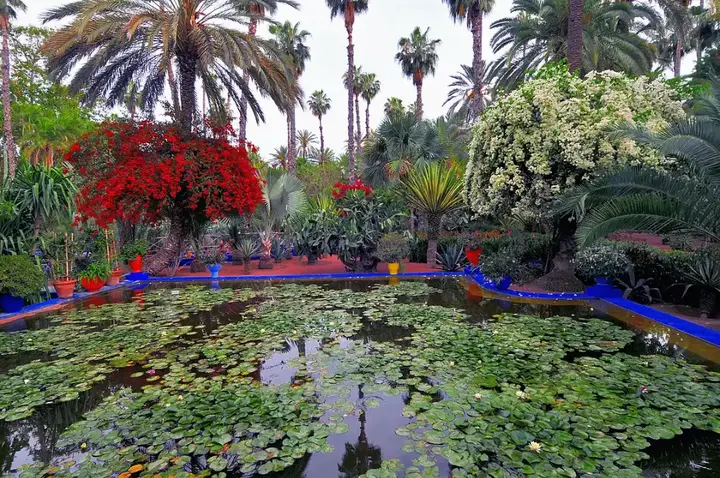
Jamaâ El Fna Square is the busiest square in Africa and has been a UNESCO World Heritage Site since 1985. This square attracts merchants, snake magicians, and musicians who play flutes, tambourines and drums. The image of Marrakech is linked to its markets specializing in the sale of leather, carpets, metals, porcelain, traditional clothes, lanterns, dried fruits and nuts. Among the most prominent of these markets are Souk Al-Samareen, Ablouh, Kashasha, Al-Rahba, Siagin, Al-Sharatin and Al-Haddadin. There is also a traditional crafts complex. The city of Marrakesh is surrounded by walls on several sides, and is about 19 kilometers long, and about 6 meters high, with about 20 gates and 200 defensive towers. Marrakech is dotted with historical palaces such as the Badi Palace, the Bahia Palace, the Makhzen House and the Almoravid Dome. There are also many gardens, parks and riads such as Menara Gardens, Majorelle Gardens, Agdal Gardens and Moulay El Hassan Park. Among the museums are the Dar Si Said Museum, the Dar El Bacha Museum, the Marrakech Museum and the Mohammed VI Museum. As for the mosques, there are hundreds of mosques, most notably the Koutoubia Mosque, the Almohad Mansour Mosque, the Kasbah Mosque and the Sheikh Sidi Mohamed Saleh Mosque.
5. Delicacies:

Marrakech dishes are characterized by the amazing flavors of various spices and spices, and include delicious tagines, ash girl, aromatic couscous, harira soup, kofta, pastilla pie, rice with saffron, raisins, almonds, sweet pastries such as chebakia, musmin and cheese cakes with dates. The city's bustling food markets, such as Jamaâ El Fna Square, showcase all the authentic Moroccan cuisine that visitors can sample in a vibrant atmosphere, as well as Moroccan green tea with mint and sugar.
6. Hospitality Oasis Luxury Sanctuaries in Marrakech:
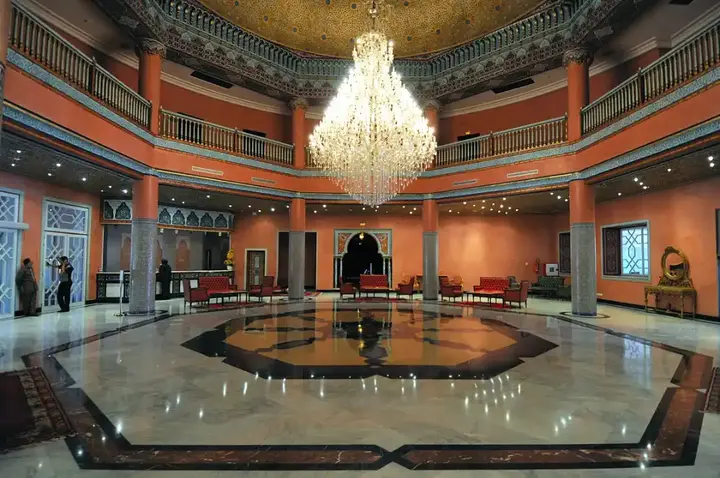
Marrakech offers many luxurious accommodations to visit, from the luxurious riad within the alleys of the old medina to the lavish resorts set amidst lush gardens. There are 400 hotels in Marrakech-Ngo, most notably, the Mamounia Hotel, which hosted international dignitaries such as Winston Churchill and Prince Charles, the Eden Andalus Hotel, the Marrakech Hotel, the Pullman Oasis Marrakech Resort and many other lodges. The city is dotted with over 100 traditional hammams.
7. Cultural splendor and festivals that define the spirit of Marrakech:
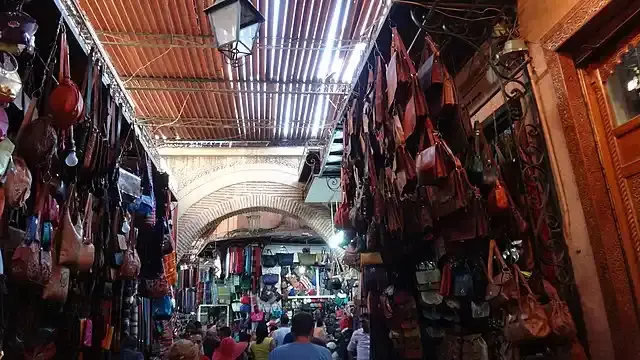
The city of Marrakech is full of museums such as the Marrakech Museum, the Si Cid Museum, the Berber Museum, the House of Photography, the Perfume Museum and many galleries. Marrakech is also home to the Royal Theatre, the Institut français and Dar Cherifa. The city is known for a number of vibrant cultural festivals that revitalize Marrakech throughout the year, from the dramatic rhythms of the Marrakech Folklore Festival, the National Folklore Festival and the International Film Festival to the spiritual celebrations of the holy month of Ramadan.
8. Embracing the essence of Marrakech:
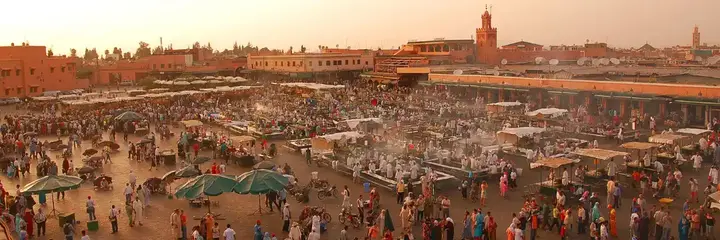
Staying in Marrakech's old neighborhoods offers visitors the opportunity to keep up with the rhythm of life in them, enjoy the warmth of human relations, and explore the fragrance of history, the fabric of the old city, its labyrinths, streets, squares and neighborhoods. You can also take part in artistic, folklore and cultural activities in the city. In doing so, visitors explore the hidden gems of Marrakech and feel their true essence.
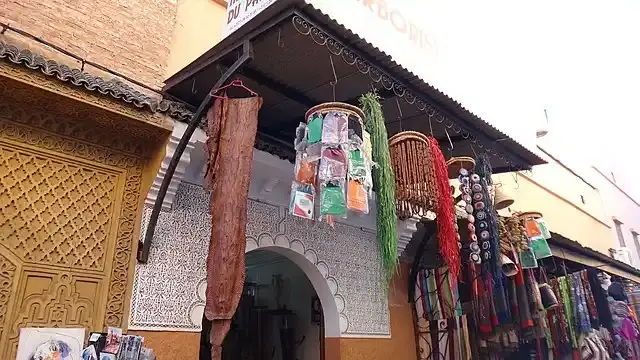
Marrakech's multifaceted appeal reflects its rich history, architectural splendor, culinary delicacies, luxurious accommodation and vibrant cultural scene. The name Marrakesh sums up the history of the Kingdom of Morocco, which was known as Marrakesh during long eras and in a number of Levantine languages. Thus, the charm and heritage of Marrakech deserve serious consideration for its inclusion on the list of exciting tourist and excursions.








